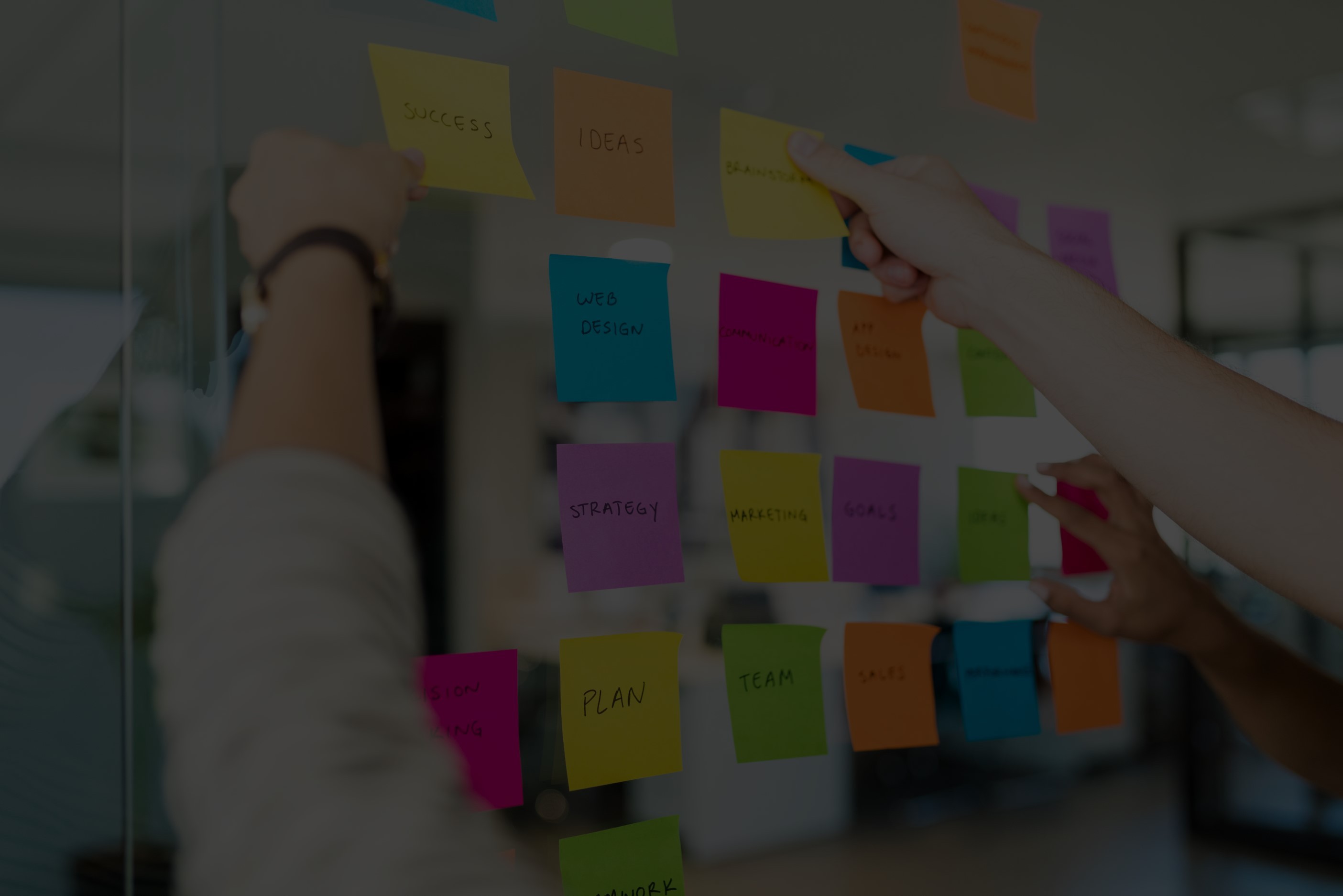
November 1, 2023
Full-Stack Project Ideas for Web Applications in 2023
| This article presents 10 full-stack project ideas. Each idea allows developers to showcase their skills in front and backend development, creating comprehensive and feature-rich web applications. With the increasing demand for versatile and agile developers, these project ideas will be valuable inspirations. |
Reading time: 15 min.
As technology advances, businesses and organizations use software solutions to streamline operations and improve efficiency. However, with so many software options available, it can take time for companies to determine which solution best fits their needs. This is where full-stack development comes in.
In today's fast-paced business world, full-stack development is more critical than ever. With the ability to handle all aspects of software development, full-stack developers can deliver projects faster and more efficiently than teams composed of multiple specialists. This results in a more streamlined development process and a better product.
This article will explore ten full-stack project ideas for web applications that can be developed in 2023. These ideas range from e-commerce platforms to task management tools to food delivery apps. Each project will require a different combination of front-end and back-end development skills, making them ideal for full-stack developers.
Full-Stack Projects Ideas: What Is Full-Stack Development?
Full-stack development is a comprehensive approach to software development that covers a web application's front-end and back-end aspects. This means that a full-stack developer has the skills to handle everything from designing user interfaces to developing server-side applications.
On the front-end side, a full-stack developer will work with technologies like HTML, CSS, and JavaScript to create user-facing interfaces and components that users interact with. They will also ensure the interface is responsive and can work on various devices and screen sizes.
On the back-end side, a full-stack developer will work with programming languages such as Python, Ruby, or Node.js to create server-side applications that handle front-end requests and interact with databases to store and retrieve data. They are also responsible for developing application programming interfaces (APIs) that enable communication between different application components.
In short, full-stack developers possess a diverse skill set that allows them to handle all aspects of software development, from designing the user interface to creating server-side applications and APIs. Full-stack developers can build complete end-to-end web application solutions with this comprehensive skill set.

12 Full-Stack Project Ideas
Full-Stack Web Projects: E-commerce Platform
An e-commerce platform is a website or app that allows businesses to sell their products or services online. Building an e-commerce platform is a complex project requiring close attention to detail, planning, and execution. However, with the right skills and expertise, you can create a robust and reliable platform that provides your customers with a seamless and enjoyable shopping experience while generating revenue for the business.
Front-end side
Developers need to design a user-friendly interface that provides a seamless shopping experience for customers. Creating visually appealing and intuitive product pages that display product information, such as images, descriptions, prices, and reviews, is essential. Additionally, you'll need to provide customers with a cart and checkout process that's secure and straightforward.
Back-end side
A system for managing product inventory, processing orders, and handling payment transactions should be developed for the back-end. This requires integrating with third-party payment gateways, developing an efficient order management system, and creating an inventory management system that allows easy product updates and restocking.

Full-Stack Web Projects: Social Networking Site
As the name suggests, a social networking site is a platform that allows people to connect and share information, ideas, and media content.
Front-end side
The front-end development comprises designing an intuitive user interface that facilitates creating user profiles, searching and interacting with other users, and viewing their posts. Moreover, the result of a feed that displays user-generated content and enables commenting and liking is crucial.
Back-end side
On the back-end side, programmers must develop a robust system that ensures secure user data storage, enables user authentication and authorization, and supports real-time user communication. Moreover, it is essential to create algorithms that recommend users and content based on their behavior and interests.
Full-Stack Web Projects: Online Marketplace
An online marketplace is a platform for buyers and sellers to interact with each other and conduct transactions. Marketplace creation is a complex but, at the same time, exciting and ambitious project.
Front-end side
The front-end development involves creating a user interface that facilitates searching for products, adding them to a cart, and checking out. It also involves building user profiles for buyers and sellers, order tracking, and dispute resolution mechanisms.
Back-end side
Developers should build a system that supports secure payment processing, product catalog management, and inventory tracking and integrate third-party APIs, such as payment gateways and shipping providers, to enable seamless transactions.
Full-Stack Web Projects: Task Management Tool
A task management tool is a centralized platform where users can create, assign, track, and manage tasks, ensuring efficient collaboration and productivity.
Front-end side
Users should be able to easily create tasks, set due dates, assign tasks to team members, and track progress. Visual indicators, such as task status, priority levels, and progress bars, can be incorporated to provide a clear overview of the project's status. Additionally, task filtering, searching, and sorting can enhance the user experience and improve task management efficiency.
Back-end side
The back-end system should handle task creation, updates, and deletion and manage user authentication and authorization. Collaborative features, like notifications, comments, and file attachments, may also be implemented to facilitate effective communication and file sharing among team members.
Full-Stack Web Projects: Education Platform
An education platform is a compelling idea that aims to revolutionize how people access and engage with educational content. It provides an online environment where learners can access courses, study materials, interact with instructors, and track their progress.
Front-end side
Users should be able to navigate different courses easily, enroll in programs, and access learning materials such as videos, documents, and quizzes. Interactive features like discussion forums, live chat, and virtual classrooms can enhance the learning experience and foster collaboration among learners and instructors.
Back-end side
The back-end development involves building a system to manage user profiles, course catalogs, and learning materials. It includes functionalities such as user authentication, enrollment management, progress tracking, and assessment. Additionally, features like personalized recommendations based on user interests and learning analytics can be implemented to enhance the platform's effectiveness.
Full-Stack Web Projects: Music Streaming Service
A music streaming service is a platform that allows users to access a vast library of songs, create personalized playlists, and enjoy music on various devices.
Front-end side
Users should be able to navigate through different genres easily, search for specific songs or artists, and access additional information about the music, such as album artwork, lyrics, and related content. Features like customizable playlists, shuffle mode, and repeat options can enhance the listening experience and cater to individual preferences.
Back-end side
Full-stack specialists must develop a system for user authentication, managing music catalogs, and processing streaming requests for the back-end side of the project. They also need to implement algorithms for personalized recommendations based on user preferences, listening history, and collaborative filtering. Integrations with music licensing and royalty management systems may also be necessary to ensure legal compliance and proper artist compensation.
Streaming technology plays a crucial role in a music streaming service. Developers must implement efficient audio streaming protocols, such as HTTP Live Streaming (HLS) or Dynamic Adaptive Streaming over HTTP (DASH), to ensure smooth playback and minimize buffering. They also must consider bandwidth optimization techniques to deliver high-quality audio while considering varying network conditions.
Full-Stack Web Projects: Content Management System
A CMS is a versatile project idea that enables users to create, manage, and publish digital content on websites or applications. It provides an interface for content creators and administrators to easily update and organize various types of content, such as articles, blog posts, images, videos, and more.
Front-end side
The focus is on creating a flexible and customizable interface that allows users to create and edit content seamlessly. It involves designing intuitive forms and editors that enable content creators to input and format text, upload media files, and apply styling. Additionally, features like drag-and-drop functionality, version control, and content preview can enhance the content creation experience.
Back-end side
Programmers should develop a database structure to store content, user accounts, and system settings. They must also implement functionalities like user authentication and authorization, access control, and content organization. The back-end system should provide an efficient way to retrieve and deliver content to the front-end for display.
A vital aspect of a CMS is its extensibility and flexibility. Developers can create plugins or modules that extend the core functionality of the CMS, allowing users to add custom features or integrate with third-party services. This can include features like SEO, e-commerce integration, multilingual support, user comments, and social media sharing.
Full-Stack App Ideas: Gaming Application
A gaming app is an exciting project idea that allows to create immersive and interactive gaming experiences for users.
Front-end side
The front-end development of a gaming app focuses on creating captivating visuals and smooth animations. Developers must design and implement game screens, character models, environments, and user interfaces that provide an enjoyable and immersive gaming experience. They must also handle user input, such as touch gestures or keyboard controls, to enable players to interact with the game world.
Back-end side
On the back-end side, developers must build the game logic, which includes handling game rules, scoring, player progression, and game physics. They must also manage data storage and retrieval, such as storing high scores, game settings, and user profiles. Real-time multiplayer functionality can also be implemented to allow players to compete or collaborate with others online.
Performance optimization is a critical aspect of developing a gaming app. It is essential to ensure that the game runs smoothly, loads quickly, and utilizes system resources efficiently. Asset optimization, memory management, and network optimization may enhance the game's performance.
Full-Stack App Ideas: Health Application
A health app is a digital platform that allows users to track, monitor, and manage various aspects of their health, providing them with valuable insights and tools to make informed decisions.
Front-end side
Users should be able to easily input and access health-related data such as physical activity, nutrition, sleep patterns, and vital signs. Visual representations, such as charts or graphs, can present the data meaningfully and actionable. Additionally, goal setting, reminders, and progress tracking can motivate users to adopt healthier habits.
Back-end side
A system that securely stores and processes user health data must be created. This involves data encryption, user authentication, and access control mechanisms to protect sensitive information. Additionally, integrating with wearable devices or health trackers can enable automatic data synchronization and enhance the accuracy and comprehensiveness of the health app.
Full-Stack App Ideas: Food Delivery Application
A food delivery app is a comprehensive platform that connects customers, restaurants, and delivery drivers, providing a seamless and efficient food delivery experience.
Front-end side
Users should be able to easily browse through various restaurants, view menus, customize their orders, and track the delivery progress in real-time. Features like search filters, ratings, and reviews can help users make informed decisions when choosing a restaurant.
Back-end side
Building a system that handles various functionalities is essential on the back-end side. This includes managing user profiles, order processing, inventory management, and integration with payment gateways for secure online transactions. Additionally, developers must implement a geolocation service to match users with nearby restaurants and delivery drivers for efficient order fulfillment.
Restaurant partners should have access to a separate interface to manage their menus, update availability, and receive and confirm orders. Delivery drivers also require a dedicated interface to view and accept delivery requests, navigate to the restaurant and customer locations, and update order statuses.
To ensure a smooth food delivery experience, developers must optimize the back-end system for speed and scalability. This involves implementing caching mechanisms, database optimization, and load-balancing techniques to handle numerous concurrent users and orders.
Security In Full-Stack Projects
Security is a critical aspect of full-stack projects as it involves safeguarding sensitive user data, protecting against malicious attacks, and ensuring the integrity and confidentiality of the system.
Here are some key considerations that you should consider for your full-stack projects:
User Authentication
Apply secure authentication mechanisms to verify the identity of users accessing the system. This can involve techniques like password hashing, multi-factor authentication (MFA), and secure session management to prevent unauthorized access.
Access Control
Implement role-based access control (RBAC) cross-site scripting (XSS), SQL injection, and code injection to ensure users can only access the functionalities and data relevant to their authorized roles. Limit privileges and restrict access to sensitive operations or administrative functions to prevent unauthorized actions.

Secure Communication
Utilize secure communication protocols such as HTTPS (HTTP over SSL/TLS) to encrypt data transmitted between the client and server. This protects against eavesdropping, tampering, and man-in-the-middle attacks.
Regular Updates
Keep all software components, frameworks, libraries, and dependencies updated with the latest security patches. Attackers can exploit vulnerabilities in outdated software to gain unauthorized access or compromise the system.
Security Testing
Perform regular security assessments and penetration testing to identify and fix vulnerabilities before malicious actors exploit them. This can include techniques such as vulnerability scanning, code review, and ethical hacking.
Security Education
Promote a culture of security awareness among development teams and users. Train developers on secure coding practices and provide educational materials to users on best security practices, such as choosing strong passwords and being cautious of phishing attacks.
By incorporating security measures throughout the development process, full-stack projects can mitigate the risks associated with unauthorized access, data breaches, and other security threats. Prioritizing security ensures the system's confidentiality, integrity, and availability, building trust among users and protecting their sensitive information.
Why is Full-Stack Development So Crucial In 2023?
Full-Stack development is crucial in 2023 due to its numerous advantages and relevance in the dynamic technological landscape. With the rise of complex and feature-rich applications, the need for developers who can handle both front-end and back-end development has become paramount.
Full-stack developers offer efficiency by seamlessly bridging the gap between different layers of an application, leading to faster development cycles and reduced costs. Their comprehensive understanding of the entire software stack enables them to design scalable and flexible architectures, adapt to emerging technologies, and ensure a cohesive user experience.
In a rapidly evolving digital landscape, full-stack development remains vital for organizations aiming to deliver innovative and high-quality applications in a timely and cost-effective manner.
FAQ
What is an example of a full-stack development project?
An example of a full-stack development project could be building an e-commerce platform from scratch. It involves designing the user interface, implementing the back-end logic for product management, payment integration, and developing the database architecture for storing product and user information.
What projects should a full-stack developer put on their resume?
The resume could include projects like building web applications, e-commerce platforms, social networking sites or content management systems (CMS), or task management tools. It is essential to highlight the technologies used, your role in the project, and any specific challenges or achievements.
How do I start a full-stack developer project?
To start a full-stack project, identify the requirements and define the scope. Then, determine the technologies and frameworks you will utilize for the front-end (HTML/CSS, JavaScript, React, Angular, etc.) and back-end (Node.js, Python, Ruby on Rails, etc.).
What is a full-stack web project?
A full-stack web project involves developing a complete web application on front and back-end components. It encompasses designing and building the user interface, implementing the server-side logic, integrating with databases, and ensuring the application functions cohesively.
What kind of projects would be the best fit for a full-stack developer?
Full-stack developers are well-suited for projects that involve building complete web applications with user interfaces, server-side logic, and database integration.
How do I create a full-stack portfolio?
To create a full-stack portfolio:
- Start by selecting a few diverse projects that showcase your proficiency.
- Include detailed descriptions of the projects, highlighting the technologies, frameworks, and languages used.
- Provide links to live demos or GitHub repositories.
What project should I do for my portfolio?
When choosing a project for your portfolio, consider your interests, strengths, and the skills you want to showcase. Select a project that aligns with your goals and allows you to demonstrate your proficiency as a full-stack developer. It could be an e-commerce platform, a social media application, a task management tool, or any other project encompassing both front-end and back-end development.
Full-Stack Projects Ideas: Conclusion
With full-stack developers capable of handling both front-end and back-end development, projects can be executed swiftly and with reduced overhead.
As technology evolves rapidly, organizations must embrace the versatility and expertise of full-stack developers to deliver innovative, high-quality applications.
Full-stack development is the key to unlocking success in the dynamic world of web applications in 2023 and beyond. Factor Dedicated Teams full-stack specialists are always ready to help you stay competitive and meet the ever-growing demands of modern users. Contact us for a free consultation.
Don’t miss our updates







